Saturday, 9 February 2019
Alausi, Ecuador
Early morning check in for the train to Quito, which will take 4 days. For the first hour, pulled by a 1920s steam train to Yaguachi which is subsequently swapped for a diesel locomotive. Hot. Very Hot. Humid. Very humid. Even at 0700hrs. Will be glad to go back up to altitude again and cooler weather.
Pull out of Duran station and immediately see how basic the living is here away from the bright lights of Guayaquil. Pass through many banana and cocoa plantations and paddy fields. The houses are built on stilts to provide protection from the rains and also provide better ventilation in this hot and steamy environment.
Settle into the air-conditioned carriage with a glass of champagne, watching the world go by. Train comprises dining cars, bar car and open air observation car. All very civilised.
Most of the bananas in the plantations are wrapped in plastic bags and conveyor systems run through the plantation to transfer bananas from tree to despatch area. So many bananas.
Arrive Yaguachi station and say goodbye to the steam locomotive. It’s too expensive to run any further than the 1hr we’ve just done and swapped for a diesel one. Another 2hr rail journey through plantations and poor rural settlements.
In Naranjito, disembark and say goodbye to the train. Due to the rainy season, a landslide prevents this train set going any further. Fortunately, at the time of the landslide the other train set was on the other side of the landslide so we’ll pick that train up to tomorrow, to continue on to Quito. But first we have to cross the foothills of the Andes to get there. More of which later.
Lunch is at Hacienda La Danesa Lodge. An old colonial type mansion set amongst its own cocoa plantation. Fascinating demonstration walking into the plantation to see the cocoa process. The trees flower twice a year (November/June) and once the flower is pollinated a cocoa pod begins to grow. It’s ripe when the green lines that separate the reddish hue of the pod turn yellow. Inside the pod is a white, sticky mass of cocoa beans which look like a bunch of lychee. The white flesh tastes of a flour and water mix and not pleasant. The beans are removed from the pod and allowed to ferment before being dried out in the sun. Once dried, the bean is lightly roasted. At this point the outer shell of the bean is removed to reveal a dark chocolate looking bean. This is what’s used to make chocolate by grinding it down and then subsequently adding back the cocoa butter to give you chocolate as most of you know. The bean in its raw state is quite bitter and a little bit of sugar changes the taste, texture and colour of the ground bean to make it more palatable.
Once the chocolate is made it can then be formed into different moulds to give you chocolate bars etc. They heat the chocolate up to a temperature and then pour it on a marble slab to cool down to 26C, which is then added to warmer chocolate to bring it back up to 32C.
Young girl gives a demonstration of spreading the chocolate out on the slab and asks for a volunteer to try. Give it a go. She’s impressed how quickly I can spread it out but explain that it’s just like playing with cement or plaster.
Excellent lunch with Ecuadorean wine. Now had the wine of each country I’ve travelled to in South America so far and not had a bad glass yet. As we depart, given the opportunity to milk a cow. Now there’s something you don’t get to do. And I don’t.
3hr bus journey up to the hill town of Alausi, 2,300m up in the Cloud Forest. Have to take a short cut along a twisty mountain track to reach the other main road but get to see the real native Ecuador. Very basic living.
The Cloud Forest is caused by the ocean currents and the topology of the area creating an atmospheric, misty, landscape. Bizarrely, given how damp it is, every house we pass has washing hanging out to dry. But it surely can’t dry in this environment.
Drop down to Huigra. The railway line only re-opened last week after a landslide so they’re putting on a show for us to celebrate. Imagine a comedy film set in a South American dictatorship and there’s a band playing music that’s not brilliant. That’s the sort of thing we had to endure. Oh. And some local women dancing on the platform. Thought I’d escaped that in Peru.
Dark and wet as we drive up the mountain to Alausi. A small hill town. Can’t see much as it’s swathed in cloud.
Excellent dinner and finally a proper chat with fellow passengers, which includes a Vietnam Veteran and former Military Intelligence Officer, a Korean War veteran and a woman who has been on Mao Tse Tung’s yacht.
Interesting. Very interesting. Will do some more digging and let you know more.




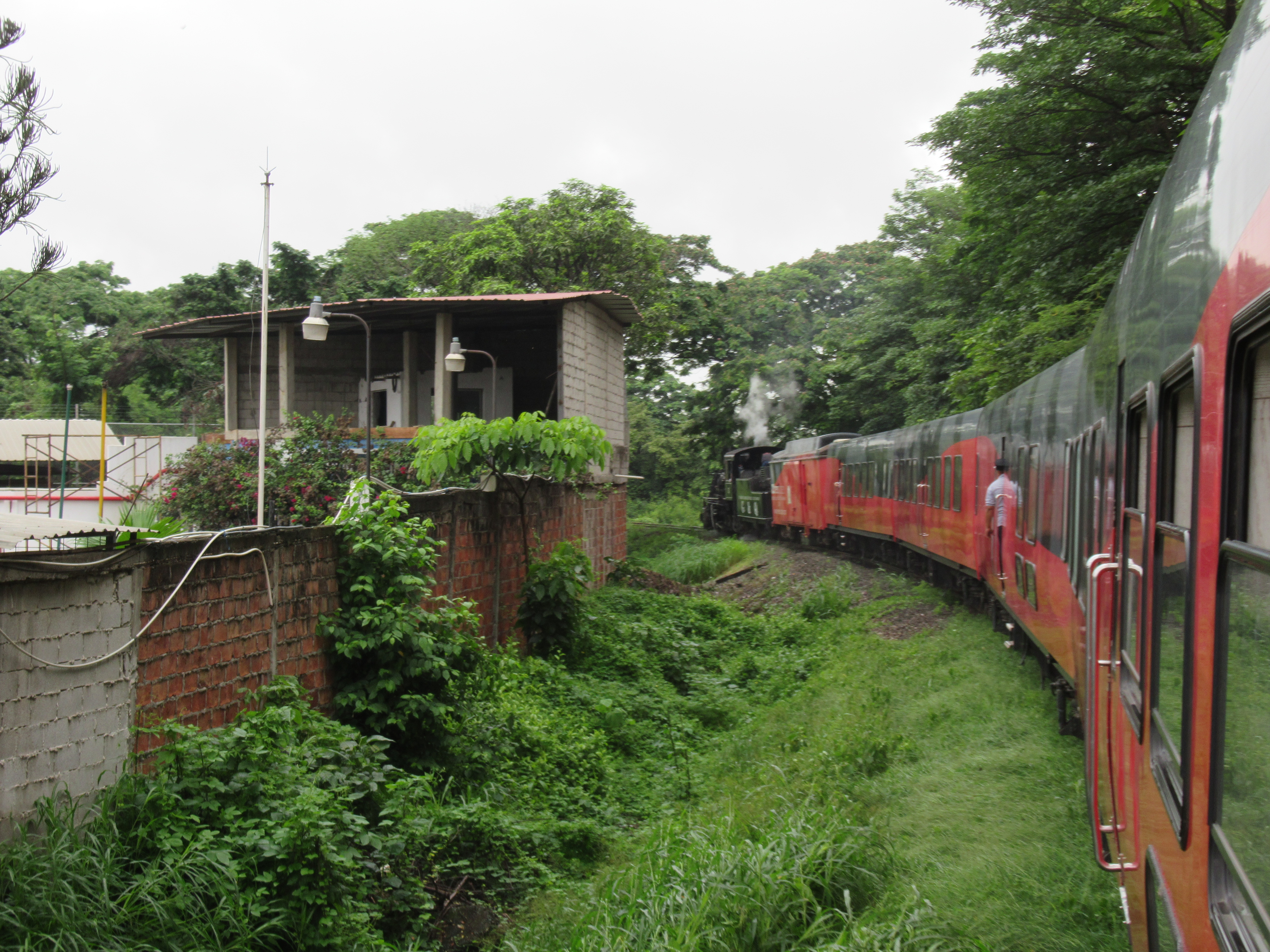





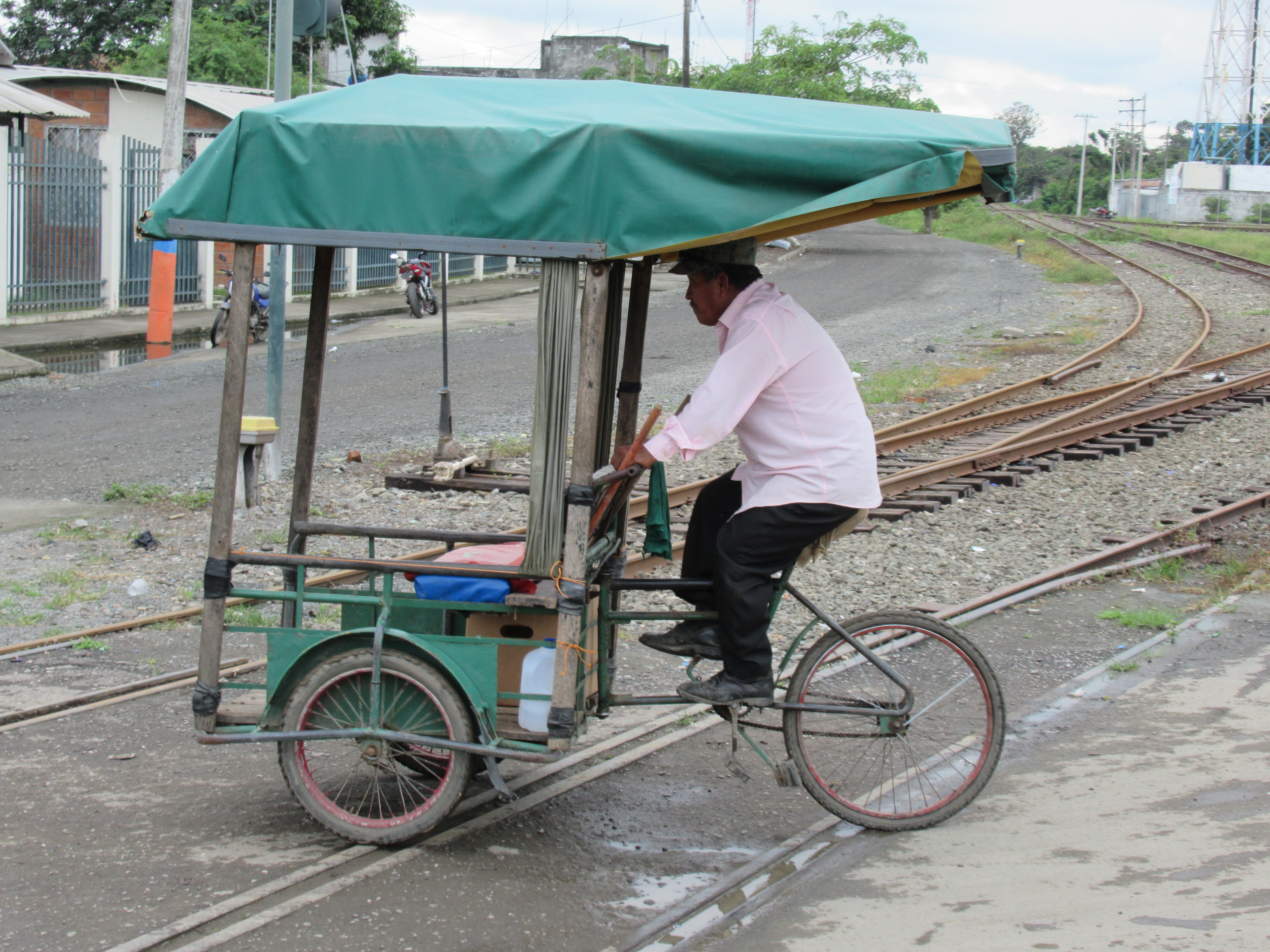















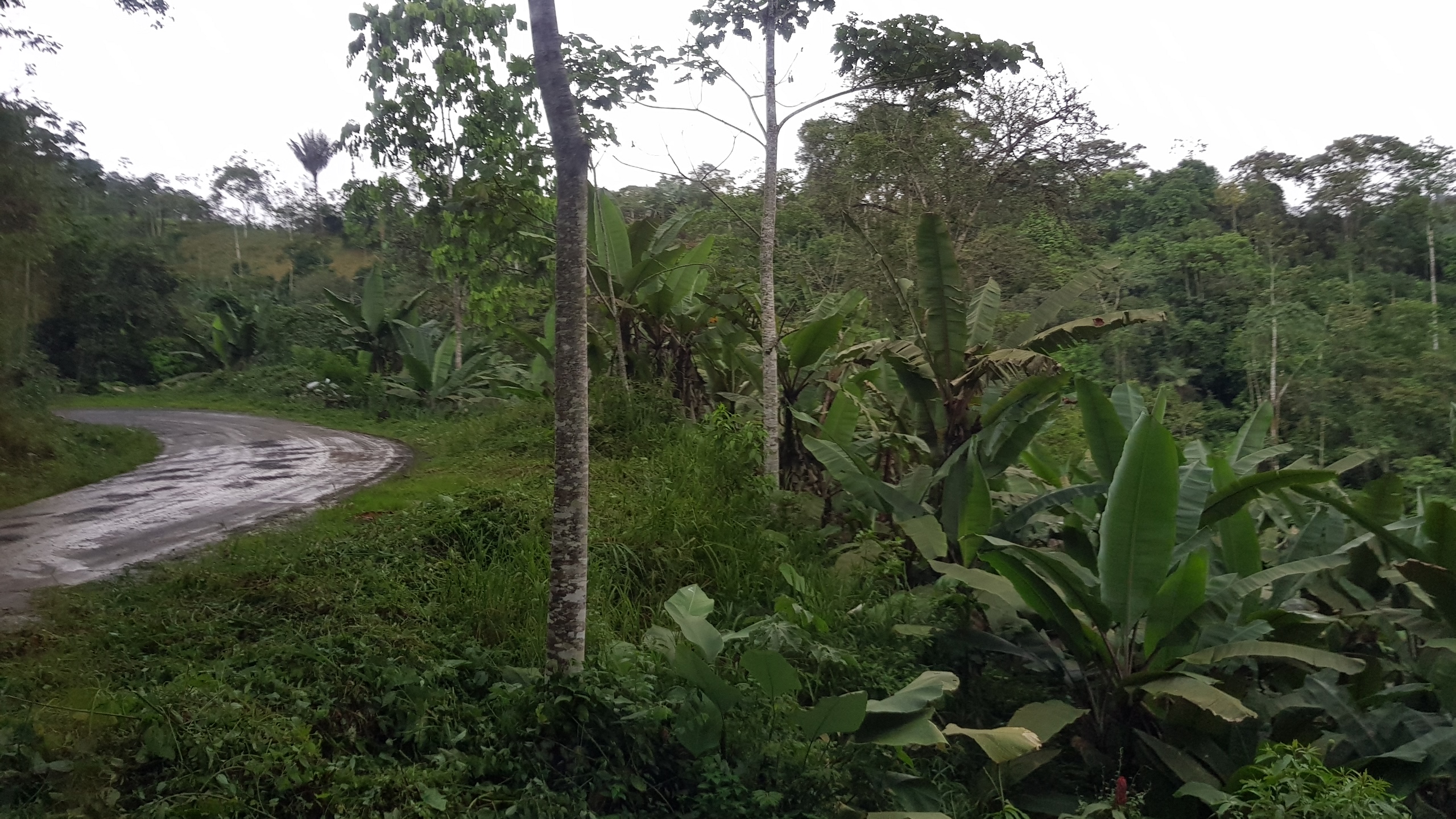


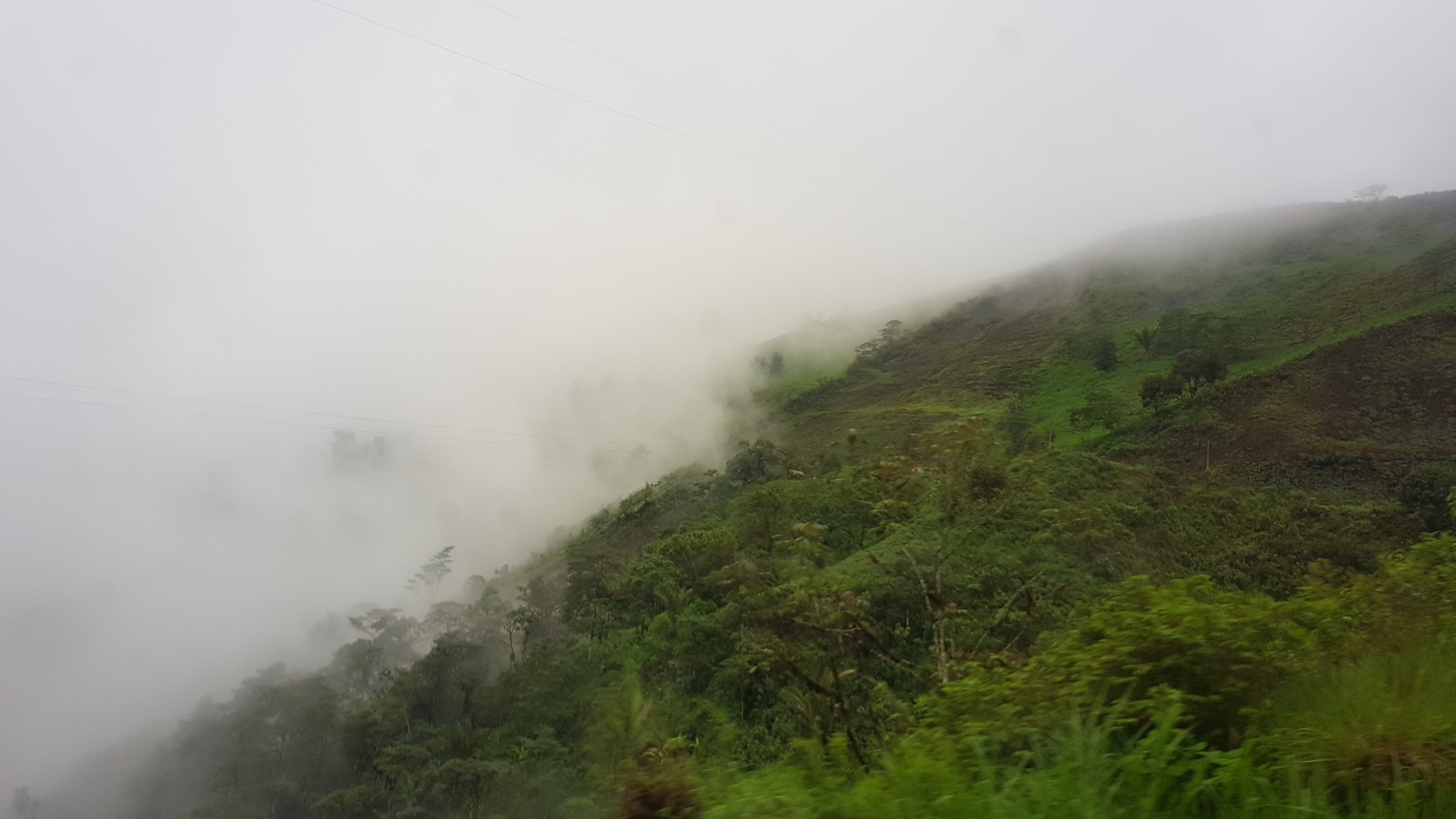
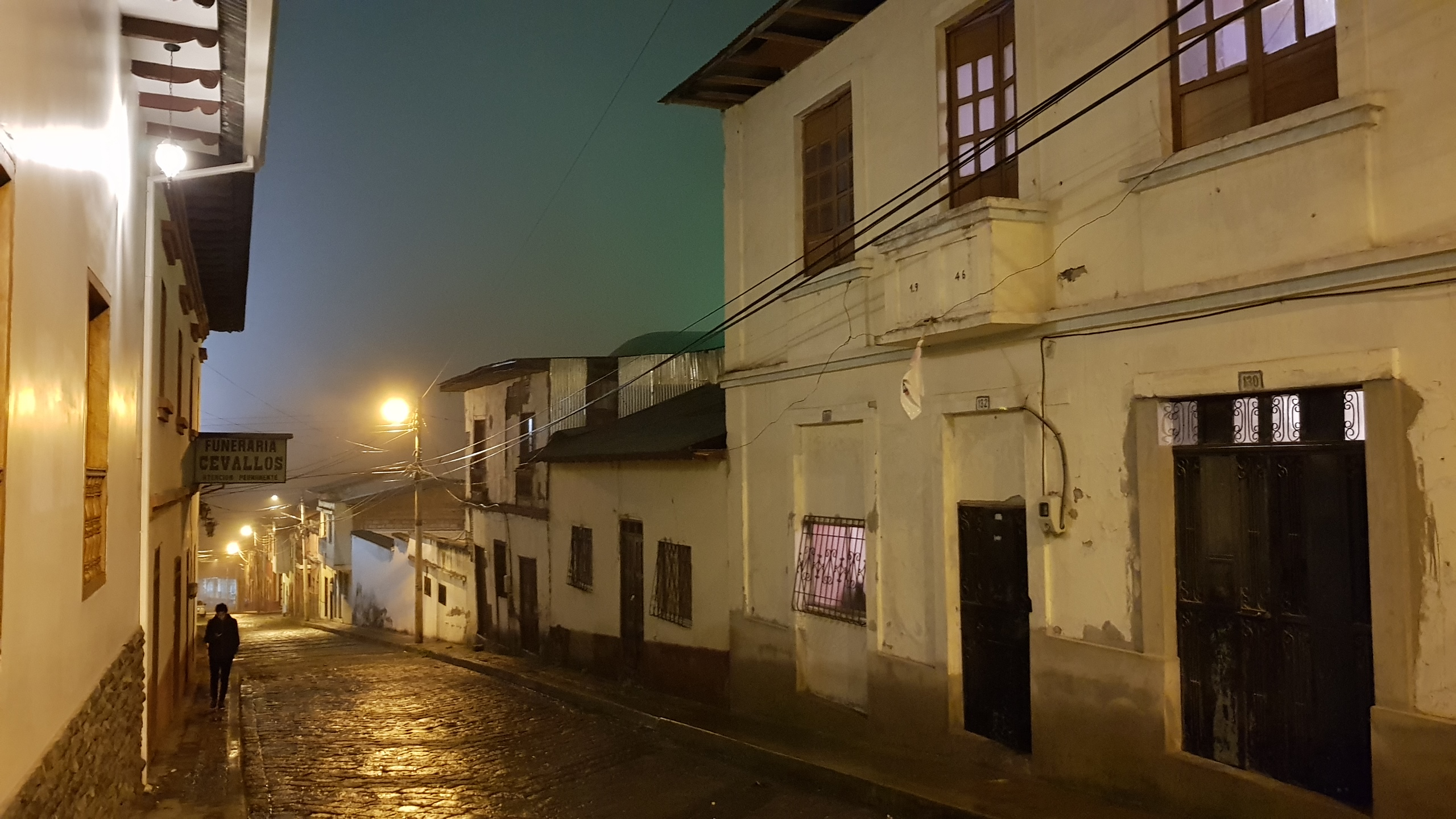

One response to “49. Chocolate heaven”
I am learning so much Ian. Your photos and films are so educational. It is eye opening how other people live.